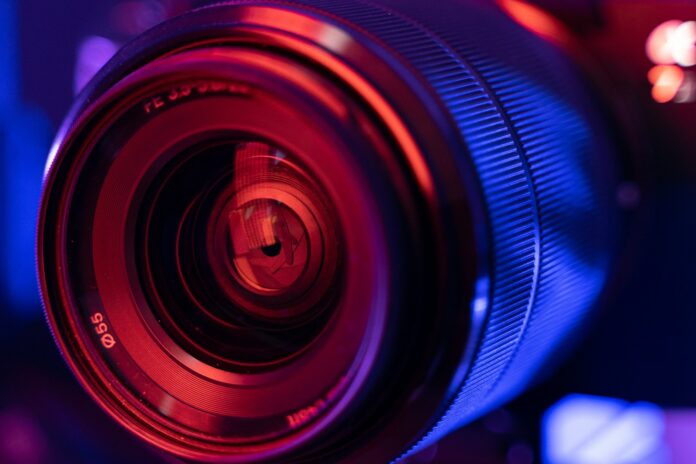Have you ever wondered why your photos turn out differently even when using the same camera body? It’s not magic; it’s the lens! The lens you attach to your camera plays a crucial role in shaping the final outcome of your images. In this comprehensive guide, we’ll delve into the intricate world of camera lenses and explore how their model impacts your photography.
Table of Contents
| Sr# | Headings |
|---|---|
| 1. | Understanding Camera Lenses |
| 2. | Exploring Different Lens Types |
| 3. | The Significance of Focal Length |
| 4. | Introduction to Crop Factor |
| 5. | Crop Factor Demystified |
| 6. | Implications of Crop Factor |
| 7. | Lens Compatibility: Full Frame vs. Crop Sensor |
| 8. | Adaptability with Lens Mounts |
| 9. | Creative Effects of Different Lens Models |
| 10. | Selecting the Right Lens for Your Needs |
| 11. | Tips for Maximizing Lens Performance |
| 12. | Maintaining Your Camera Lens |
| 13. | Conclusion |
1. Understanding Camera Lenses
Camera lenses are like the eyes of your camera. They capture the world around you and translate it into stunning images. Understanding the basics of camera lenses is essential for any photographer, whether you’re a novice or a seasoned pro.
2. Exploring Different Lens Types
From wide-angle to telephoto, prime to zoom, the market is flooded with various lens types catering to diverse photographic needs. Each lens type offers its unique perspective, allowing you to unleash your creativity in different ways.
3. The Significance of Focal Length
Focal length is a fundamental aspect of lens design. It determines the angle of view and magnification of your images. Whether you want to capture sweeping landscapes or intimate portraits, choosing the right focal length is crucial for achieving your desired results.
4. Introduction to Crop Factor
Crop factor is a term commonly associated with digital cameras, particularly those with APS-C or Micro Four Thirds sensors. Understanding crop factor is essential for maximizing the potential of your camera system and lenses.
5. Crop Factor Demystified
In simple terms, crop factor refers to the ratio of the sensor size to that of a full-frame sensor. For example, a crop factor of 1.5x means that the sensor is 1.5 times smaller than a full-frame sensor. This affects the effective focal length of your lenses and alters the field of view.
6. Implications of Crop Factor
The implications of crop factor extend beyond just changing the field of view. It also affects depth of field, perspective, and image compression. Understanding how crop factor influences these aspects is crucial for achieving your desired photographic results.
7. Lens Compatibility: Full Frame vs. Crop Sensor
When it comes to lens compatibility, understanding the difference between full-frame and crop sensor cameras is vital. While full-frame lenses can be used on crop sensor cameras with certain limitations, the reverse is not always true.
8. Adaptability with Lens Mounts
Lens mounts play a significant role in determining the compatibility of lenses with different camera bodies. Adapting lenses across various mounts opens up a world of possibilities, allowing you to experiment with different lens combinations.
9. Creative Effects of Different Lens Models
Different lens models offer unique creative effects, from the dreamy bokeh of a prime lens to the versatile zoom capabilities of a telephoto lens. Exploring these creative effects can elevate your photography to new heights.
10. Selecting the Right Lens for Your Needs
With so many lens options available, choosing the right one for your specific needs can be overwhelming. Consider factors such as focal length, aperture, and intended use to narrow down your options and find the perfect lens for your photography style.
11. Tips for Maximizing Lens Performance
Once you’ve chosen the right lens, maximizing its performance is key to capturing stunning images consistently. From proper lens care to understanding its strengths and weaknesses, these tips will help you get the most out of your lenses.
12. Maintaining Your Camera Lens
Taking care of your camera lens is essential for ensuring its longevity and optimal performance. Learn how to clean your lens properly, store it safely, and protect it from damage to enjoy years of flawless photography.
13. Conclusion
Your camera lens is more than just a piece of glass; it’s a gateway to creativity and expression. By understanding how different lens models affect your images, you can unlock new possibilities and take your photography to the next level.
Frequently Asked Questions
1. What is crop factor, and how does it affect my photos?
Crop factor refers to the ratio of the sensor size to that of a full-frame sensor. It affects the effective focal length of your lenses, altering the field of view and other aspects of your images.
2. Can I use full-frame lenses on a crop sensor camera?
Yes, you can use full-frame lenses on a crop sensor camera, but there may be limitations, such as vignetting or reduced field of view.
3. How do I choose the right lens for my camera?
Consider factors such as focal length, aperture, and intended use when selecting a lens for your camera. Think about the types of photography you enjoy and the results you want to achieve.
4. What are some common lens mount types, and are they interchangeable?
Common lens mount types include Canon EF, Nikon F, and Sony E-mount. While some mounts are interchangeable with adapters, compatibility varies depending on the camera and lens combination.
5. How should I clean and maintain my camera lens?
To clean your camera lens, use a soft brush or blower to remove any dust, then gently wipe the lens with a microfiber cloth. Avoid using harsh chemicals or abrasive materials, and always store your lens in a protective case when not in use.
More From IZASE
- Photos Have Astonishing Impact for Campaigns
- Discover the Newest Mirrorless Waterproof Rugged Cameras
- Instagram Hair Ideas: Inspirational Influencers
- The Best Smartphone Cameras to Consider for your Next Vacation
- Witnessing the Birth of the Coronavirus Economy
- Fashion Model Goes Casual in Original Way


